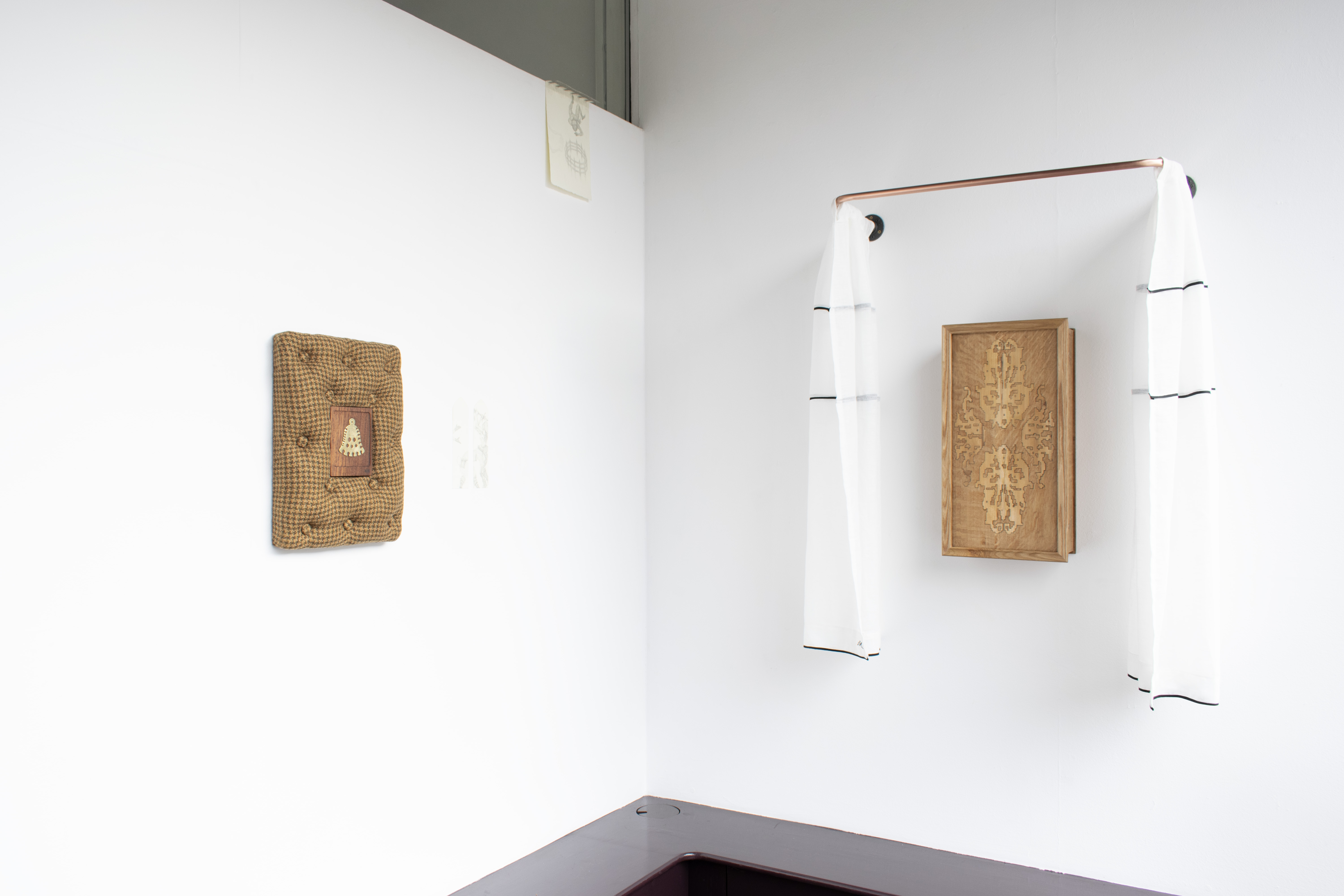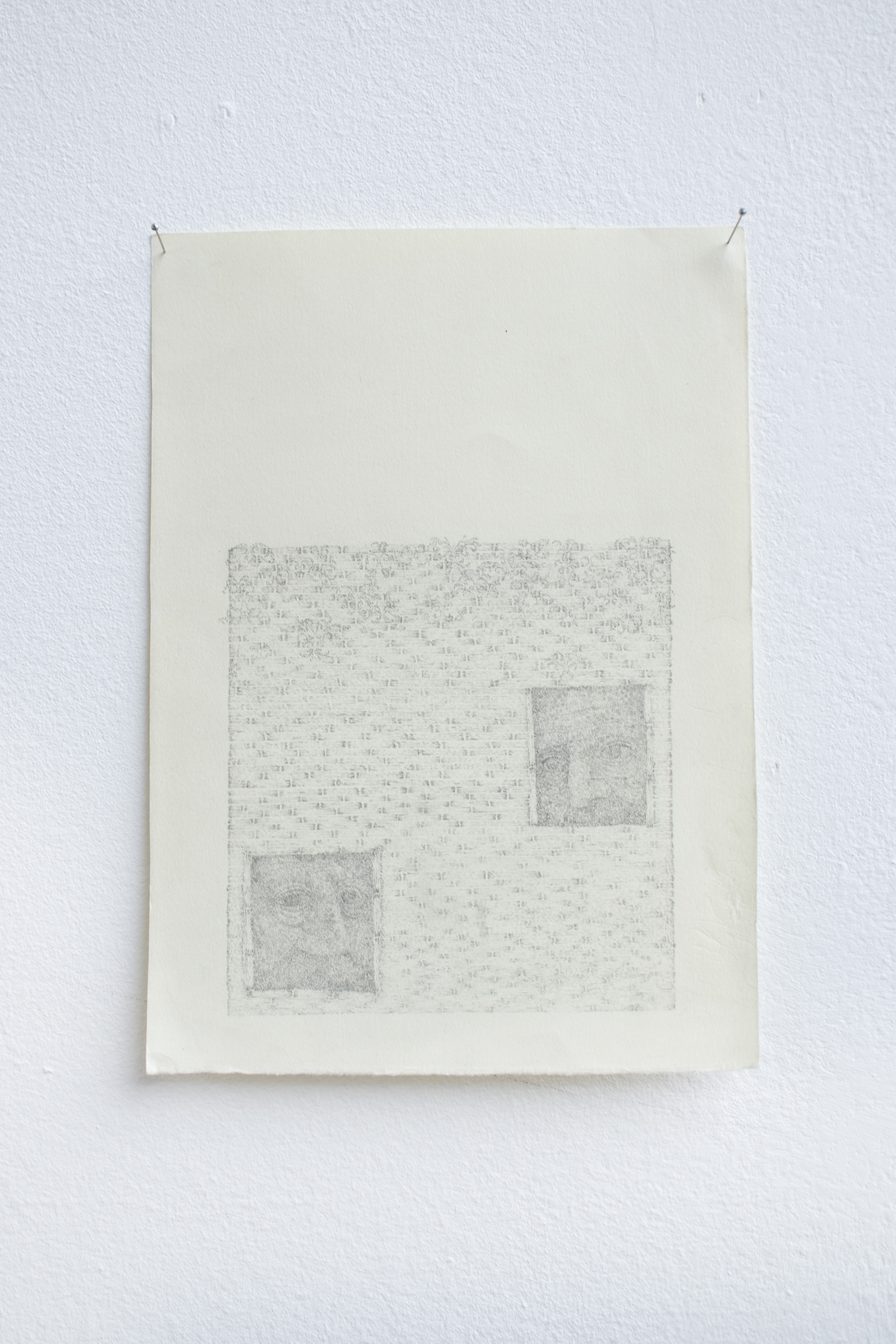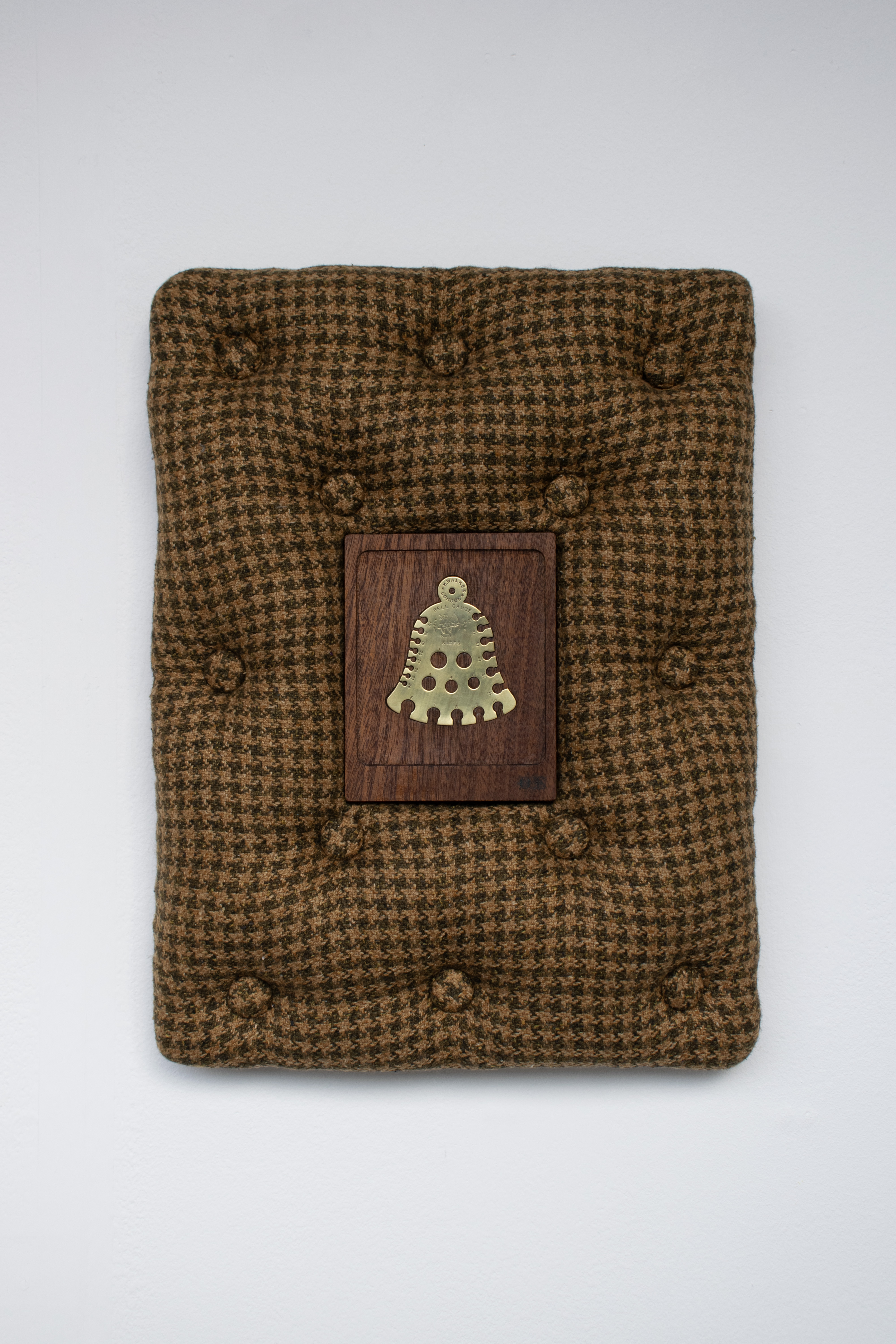Heartlands
Gabriel Kidd
Olivia England
Curated by Ella Slater
September 25 - November 16
2024
Gabriel Kidd
Olivia England
Curated by Ella Slater
September 25 - November 16
2024














With Eyes at the Back of Our Heads
Denise Levertov (1923–1997)
With eyes at the back of our heads
we see a mountain
not obstructed with woods but laced
here and there with feathery groves.
The doors before us a facade
that perhaps has no house in back of it
are too narrow, and one is set high
with no doorsill. The architect sees
the imperfect proposition and
turns eagerly to the knitter.
Set it to rights!
The knitter begins to knit.
For we want
to enter the house, if there is a house,
to pass through the doors at least
into whatever lies beyond them,
we want to enter the arms
of the knitted garment. As one
is re-formed, so the other,
in proportion.
When the doors widen
when the sleeves admit us
the way to the mountain will clear,
the mountain we see with
eyes at the back of our heads, mountain
green, mountain
cut of limestone, echoing
with hidden rivers, mountain
of short grass and subtle shadows.
***
We have all sorts of ways of thinking that overlap and interpenetrate, but part of what’s weird about being a human being is that if you have experienced something directly, in real life, it may have no greater weight in your memory than something you’ve experienced in imagination, in a dream or a movie or a book. Indeed, the imaginary experience may have more weight, simply because it was well done. (If I have a dream about having sex with you, I will blush when we next meet.) When our minds go, I found out, we can’t tell the difference between what we read and what we lived, between a story we heard and a story we experienced, something we lived through. It’s as if we lived through all of it: war and peace, great expectations, my fair lady, and friendship’s death - Leslie Dick, from Kathy Acker: Get Rid of Meaning (2022)If ‘I’ is an amalgamation – of mythology, of culture, of history, dreams, desire– then our selves lie not only within, but also beyond us. They lie in the stories we tell and have been told, the places we frequent in the day, and the lands we frequent in the night. These ‘heartlands’ (lands of the heart) are “not history, but our own histories”, as told by the poet Denise Levertov, whose words sit alongside this show. They are identity as a spider web rather than an island, or poetry of the soul.
Through the practices of Gabriel Kidd and Olivia England, this exhibition considers the potential of storytelling– whether that of the past or of the imagination– in the formation of identity. Kidd uses speculative narratives realised through intricate drawings, as well as the gathering of objects and organic ephemera, to explore the substance of queerness. At Flexitron, they present both works on paper, in addition to sculptures of fabric and latex in which the natural world is entwined with the fantastical. After all, as Derek Jarman said, the gardener (or, in this case, the gatherer) “digs in another time, without past or future, beginning or end”.
Similarly, Olivia England’s practice draws on influences which transcend temporal boundaries. At Flexitron, these materialise in the form of woodwork sculptures which transform objects and motifs associated with the ‘feminine’, subverting their past connotations. England’s work also incorporates her own ancestry and traditional forms of British craftsmanship (such as the tweed on show in this exhibition), to similarly explore the influence of personal histories on the formation of identity.
Alongside Levertov’s With Eyes at the Back of Our Heads, ‘Heartlands’ presents an opportunity to consider the ways in which both imagined and inherited stories shape our understanding of our self and our collective selves; that which never solely lies within us.
Exhibition text by Ella Slater

1. Olivia England, Shrine for the Unworthy (2023), Yew, Pine and Stickers, 29 x 37 x 6 cm
2. Vitrine containing a seletion of cigarette cards depicting domestic craft and home repair tasks (from the archive of Olivia England)
3. Gabriel Kidd, cloistered/cloistering (2024), Pencil on paper, 38.5 x 28.5 cm
4. Gabriel Kidd, “I love you more than my own eyes” (2024), Pencil on paper, 13 x 24 x 17 cm
5. Olivia England, The archer (2024), Scottish Tweed, Mahogany, Bell Gauge, Wood Wax, 37.5 x 29 x 6.5 cm
6. Gabriel Kidd, Applause at the faggotry training session (2024), Pencil on paper, each 19.5 x 5cm
7. Gabriel Kidd, Falling into a fag trap (2024), Pencil on paper, 25 x 18 x 3.5cm
8. Olivia England, A Scroll & M.E. (2024), Oak, Pine, Brass, 51 x 27 x 11 cm (for A Scroll), Linen Mix, Cotton Thread and Brass, 99 x 72 x 32 cm (for M.E.),
9. Gabriel Kidd, We fill it and press our big faces against the windows (2024), Pencil on paper, 21 x 15cm
10. Gabriel Kidd, houses ! (2024), Latex, Thread, Hair, Dust, Lavender, Dimesnions variable
11. Gabriel Kidd, A bonnet (2024), Cotton, voile, walnut dyed silk, faux pearls, dahlias, cow parsley, feather grass, doilies, thread, latex, sheep’s ribs, Dimensions Variable
Biographies:
Gabriel Kidd
Gabriel Kidd (b.1999, Manchester, United Kingdom) works with storytelling, mythology, and processes of biology and geology to explore the substance of queerness. Their practice is comprised primarily of pencil drawing and assemblage, incorporating the process of gathering– broken things, fragile ephemera, bone, wood, textiles; a materialisation of speculative narrative as a formative component of identity.
Recent exhibitions include: finetoothcomb, Greatorex Gallery, London, UK (2024), Blue tac on a spike is no good, EC2A 2BS, London, UK (2024), In the membrane, Paradise Works, Salford, UK (2023), The Alumni Strike Back with Short Supply, Paradise Works, Salford, UK (2023), I’ve always kept a unicorn, Pipeline Contemporary, London, UK (2023), and New Contemporaries 2022, South London Gallery, London & Humber Street Gallery, Hull, UK (2022). Following a BA in Fine Art at Manchester School of Art from 2018–2021, Kidd is currently studying for an MFA in Fine Art at Slade School of Art, to be completed in 2025.
Olivia England
Olivia England (b.1999, London, United Kingdom) is a London-based multidisciplinary artist concerned with the lived histories of objects, in addition to materiality as a conceptual container for both memory and identity. Her sculptural practice often combines historically industrialised crafts, such as metal and woodwork, with the private– and female– connotations of the domestic, and is greatly concerned with these gendered implications.
Recent exhibitions include: Muse Residency Group Show, The Muse Gallery, London, UK (2023), RCA 2023, Royal College of Art, London, UK (2023), Shrine for the Unworthy, Hockney Gallery, London, UK (2023), Breaking Bad, Rag Gallery/British Art Show, Manchester, UK (2022), Falling Into Place, Manchester School of Art, Manchester, UK (2022) and Made It 2022, HOME, Manchester, UK (2022). Following a BA in Fine Art at Manchester School of Art from 2019–2022, England graduated from an MA in Visual Communication at the Royal College of Art in 2023.
Ella Slater
Ella Slater (b. 2000, Manchester, UK) is a writer and curator based in London. Her work has been published in frieze, Elephant, The Toe Rag, émergent and Service 95, amongst other outlets, and ranges from essays on Kathy Acker’s dream maps and the ‘speculative cartography’, to articles on white women’s victimhood and spiritual museology. In 2023 she published Intra Venus, an art journal celebrating the ‘erotics of disclosure’ (as coined by Dodie Bellamy) in relation to the artistic practices of women and non-binary people. Ella also writes a regular column for Elephant magazine titled ‘Sharing Plates’, in which she interviews artists over dinner at a restaurant of their choice.